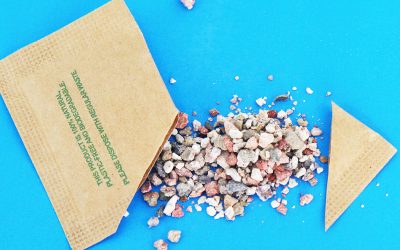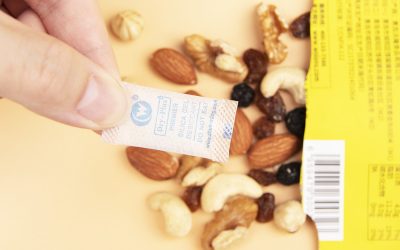It is widely recognized that non-degradable products, such as plastic goods, have caused significant pollution and destruction to soil, water bodies, and ecosystems due to their prolonged accumulation in the environment. In contrast, biodegradable products can naturally decompose after being discarded, greatly reducing their negative impact on the environment. Moreover, the development of biodegradable products often involves the use of renewable resources or recycled materials. This approach not only reduces the consumption of limited resources but also promotes sustainable use, aligning...
Industry Insights
Why Is Silica Gel Desiccant The Most Common?
Many people, out of curiosity, have opened desiccant packets to find small, glass bead-like substances inside. While there are various types of desiccants on the market, the transparent granular type is the most commonly used. This type is known as silica gel desiccant, and its widespread use can be attributed to its excellent performance and features, making it a go-to choice across many industries. First, silica gel desiccant has outstanding adsorption properties and fast moisture absorption capabilities, able to absorb up to 30% of its own weight in moisture. It also boasts excellent...
Where Does The Moisture Inside A Container Come From?
Containers are not entirely sealed spaces—especially near the doors, there are often small gaps where outside moisture can seep in. Additionally, moisture is hidden in the cargo itself, the packaging materials, pallets, and even the wooden floors of the container. Since ocean shipping involves long transit times and significant temperature fluctuations between day and night, this trapped moisture can evaporate, condense into liquid droplets, and fall onto the cargo, potentially causing damage. A key point to note is that container wooden floors always contain some level of moisture, with the...
Which Preservatives Should Be Used For Preserving Dried Fruits?
The shelf life of dried fruits is typically affected by factors such as microbial contamination, light exposure, temperature, moisture, and oxygen. Therefore, to ensure the proper storage and preservation of dried fruits, it’s important to address these factors. First, during production, strict hygiene control is crucial to minimize microbial contamination at the source. Additionally, selecting the right packaging materials and storage conditions is vital. Ultraviolet (UV) light can trigger oxidation reactions in the fruit, causing discoloration and spoilage, while high temperatures can...
Why Is Sea Freight The Primary Mode Of Transportation For Global Trade?
Did you know? Despite the occasional moisture issues that can occur during container shipping, sea freight remains the most dominant mode of transportation for global trade, primarily because of its cost advantages over air and rail transport. When you need to move large quantities of goods over long distances, a cargo ship acts like a massive, mobile warehouse, handling everything in one go—and at a surprisingly low cost. Even more impressive, sea freight is the only transportation method that can reach every corner of the globe, making it indispensable for global trade. However, container...
How To Reuse Desiccants?
Many friends often ask how to reuse desiccants. First, it's important to clarify that not all desiccants can be reused. Chemical adsorption desiccants, for example, undergo a chemical reaction when they absorb moisture, forming new substances, which makes the process irreversible and unsuitable for reuse. Take calcium chloride desiccants, for instance. The molecules in calcium chloride have a strong affinity for water and react chemically with moisture to form hydrates, thus achieving moisture absorption. However, once calcium chloride has absorbed enough moisture and formed hydrates, it...





